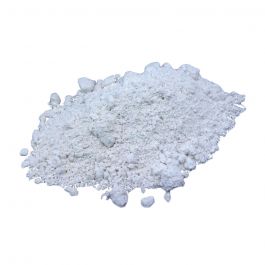- Language
- 🇺🇸
- Joined
- Mar 1, 2024
- Messages
- 339
- Reaction score
- 453
- Points
- 63
Czy aluminium nie sprawiłoby, że byłoby to bardziej podejrzane? Wtedy to trochę oczywiste, że coś ukrywasz. Ale nie wiem, nigdy wcześniej nie wysyłałem narkotyków.
- Language
- 🇬🇧
- Joined
- Jan 19, 2024
- Messages
- 45
- Reaction score
- 30
- Points
- 18
Wiele osób twierdzi, że aluminium pomaga blokować promieniowanie rentgenowskie, ale moim zdaniem to mit.
Ołów pomaga blokować promieniowanie rentgenowskie ze względu na swoją gęstość 11400 kg/m³, ale aluminium ma tylko 2700 kg/m³, więc myślę, że jest bezużyteczne.
nadaje się tylko do owijania narkotyków
Ołów pomaga blokować promieniowanie rentgenowskie ze względu na swoją gęstość 11400 kg/m³, ale aluminium ma tylko 2700 kg/m³, więc myślę, że jest bezużyteczne.
nadaje się tylko do owijania narkotyków
↑View previous replies…
- Language
- 🇺🇸
- Joined
- Jan 23, 2024
- Messages
- 112
- Reaction score
- 39
- Points
- 28
- Deals
- 12
bzdura! folia aluminiowa nie blokuje promieniowania rentgenowskiego.
Twój narkotyk to kupa cząsteczek organicznych. Organiczne wyglądają inaczej niż metal na zdjęciu rentgenowskim i można je odróżnić.
jeśli chcesz zablokować promieniowanie rentgenowskie, musisz zanurzyć swój narkotyk w podobnym organicznym środowisku, aby wyglądał jak coś nieszkodliwego. ale w tym momencie przestaję, ponieważ nie chcę ujawniać moich własnych metod ukrywania.
Twój narkotyk to kupa cząsteczek organicznych. Organiczne wyglądają inaczej niż metal na zdjęciu rentgenowskim i można je odróżnić.
jeśli chcesz zablokować promieniowanie rentgenowskie, musisz zanurzyć swój narkotyk w podobnym organicznym środowisku, aby wyglądał jak coś nieszkodliwego. ale w tym momencie przestaję, ponieważ nie chcę ujawniać moich własnych metod ukrywania.
- Language
- 🇺🇸
- Joined
- May 8, 2024
- Messages
- 43
- Reaction score
- 9
- Points
- 8
Theoretically aluminum can shield against electromagnetic waves, also x-ray.
But the thin layers used mostly are not enough.
There are different ways through which a material can block electromagnetic waves.
Scattering and absorption which often happens in high density, but it also works through the conductivity of a metal, and aluminum and copper for example have a good conductivity, and this allows them to absorb energy from the electromagnetic radiation pretty well, because of their free electrons.
But you would need a thick layer of aluminum, the normal foil is not going to do that well-
But the thin layers used mostly are not enough.
There are different ways through which a material can block electromagnetic waves.
Scattering and absorption which often happens in high density, but it also works through the conductivity of a metal, and aluminum and copper for example have a good conductivity, and this allows them to absorb energy from the electromagnetic radiation pretty well, because of their free electrons.
But you would need a thick layer of aluminum, the normal foil is not going to do that well-
- Language
- 🇺🇸
- Joined
- May 8, 2024
- Messages
- 43
- Reaction score
- 9
- Points
- 8
Also the shielding ability of aluminum is better (lot better) at lower frequencies, and thickness would need to be increased a lot to shield effectively against x-rays. Also at such high frequencies like x-ray denser materials with high Z are normally required because they have a higher probability of interacting with high energy electromagnetic waves, but theoretically every conductor can block them t some point, also aluminum, but you need a very thick layer which is not practical.

